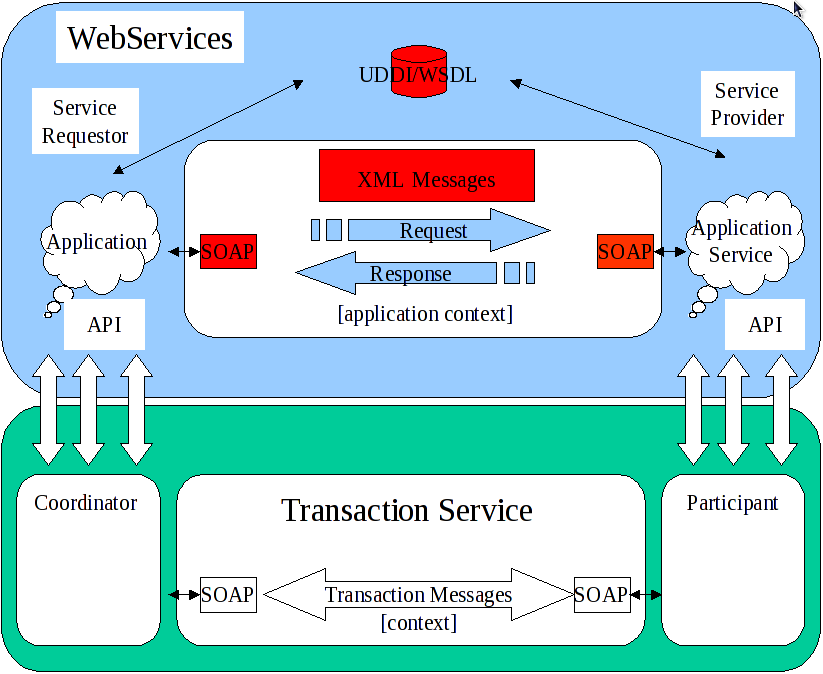-
Language:
English
-
Language:
English
Red Hat Training
A Red Hat training course is available for JBoss Enterprise Application Platform Common Criteria Certification
Chapter 17. Transactions Overview
Note
This chapter deals with the theory of transactional Web Services. If you are familiar with these principles, consider this chapter a reference.
Transactions have emerged as the dominant paradigm for coordinating interactions between parties in a distributed system, and in particular to manage applications that require concurrent access to shared data. Much of the JBoss Transaction Service Web Service API is based on contemporary transaction APIs whose familiarity will enhance developer productivity and lessen the learning curve. While the following section provides the essential information that you should know before starting to use XTS for building transactional Web Services, it should not be treated as a definitive reference to all transactional technology.
A classic transaction is a unit of work that either completely succeeds, or fails with all partially completed work being undone. When a transaction is committed, all changes made by the associated requests are made durable, normally by committing the results of the work to a database. If a transaction should fail and is rolled back, all changes made by the associated work are undone. Transactions in distributed systems typically require the use of a transaction manager that is responsible for coordinating all of the participants that are part of the transaction.
The main components involved in using and defining transactional Web Services using XTS are illustrated in Figure 17.1, “Components Involved in an XTS Transaction”.

Figure 17.1. Components Involved in an XTS Transaction
17.1. The Coordinator
Every transaction is associated with a coordinator, which is responsible for governing the outcome of the transaction. When a client begins a Web Service transaction it posts a
create request to a coordination service, which creates the coordinator and returns its details to the client. This service may be located in its own container or may be colocated with the application client or with one of the transactional web services for improved performance. The coordination service is typically responsible for managing many transactions in parallel, so each coordinator is identified by a unique transaction identifier.
The coordinator is responsible for ensuring that the web services invoked by the client arrive at a consistent outcome. When the client asks the coordinator to complete the transaction, the coordinator ensures that each web service is ready to confirm any provisional changes it has made within the scope of the transaction. It then asks them all to make their changes permanent. If any of the web services indicates a problem at the confirmation stage, the coordinator ensures that all web services reject their provisional changes, reverting to the state before the transaction started. The coordinator also reverts all changes if the client asks it to cancel the transaction.
The negotiation between the coordinator and the web services is organized to ensure that all services will make their changes permanent, or all of them will revert to the previous state, even if the coordinator or one of the web services crashes part of the way through the transaction."

